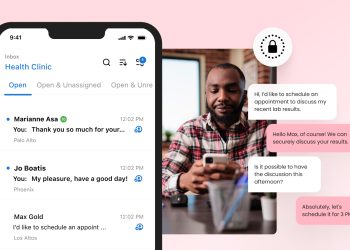Nonprofit organizations are vital in addressing social issues and positively impacting communities. However, their ability to carry out their missions relies heavily on the support and generosity of donors. To secure the necessary funding, nonprofit organizations must master crafting short donation requests. In this article, we will provide a comprehensive guide for nonprofit organizations seeking to maximize the success of their donation requests.
1. Understanding Your Audience:
Before embarking on a donation message campaign, it is essential to understand your target audience. Research and segment your potential donors based on their interests, demographics, and giving preferences. By tailoring your donation requests to specific donor segments, you can increase their relevance and resonate with potential supporters on a deeper level.
2. Compelling Storytelling:
People connect emotionally with stories, so incorporating compelling storytelling into your donation message is crucial. Share powerful anecdotes, personal testimonials, or success stories that illustrate the impact of your organization’s work. By presenting real-life examples, you can engage potential donors and make them feel part of the narrative, inspiring them to contribute to your cause.
3. Clear and Convincing Communication:
When crafting donation requests, clarity is critical. Clearly articulate your organization’s mission, goals, and the specific purpose for which you seek funds. Provide a concise and compelling explanation of how donations will be used to make a tangible difference. Use persuasive language to highlight the urgency and importance of the cause, motivating potential donors to take action.
4. Multiple Donation Channels:
Offering multiple donation channels increases accessibility and convenience for potential donors. Provide options for online donations through your organization’s website or dedicated platforms. Additionally, traditional methods such as mail-in donations or in-person events should be considered. The more avenues you provide, the higher the chances of attracting diverse donors who prefer different modes of contribution.
5. Personalization:
Personalization goes a long way in establishing a connection with potential donors. Address donors by name in your communication and tailor your donation requests based on their previous giving history or expressed interests. Show appreciation for their past contributions and highlight how their continued support can make a meaningful difference. Personalization demonstrates that you value their involvement and can cultivate stronger relationships with donors.
6. Transparency and Accountability:
Donors want to know that their contributions are being used effectively and responsibly. Be transparent about your organization’s financial management practices and demonstrate accountability for the funds you receive. Provide regular updates on the progress and impact of your projects, ensuring donors feel confident in the value of their donations. Transparency builds trust and encourages ongoing support.
7. Engaging Donor Recognition:
Recognizing and appreciating donors is vital for fostering a sense of belonging and loyalty. Acknowledge donors promptly and genuinely, expressing gratitude for their support. Consider offering recognition opportunities, such as donor walls, naming rights, or exclusive events for significant contributors. By recognizing their contributions publicly, you can inspire others to follow suit and encourage ongoing engagement.
8. Leveraging Social Media:
Social media platforms provide an effective and cost-efficient way to reach a broad audience and engage potential donors. Create compelling content that showcases your organization’s impact, and encourage supporters to share it with their networks. Utilize social media ads and targeted campaigns to raise awareness about your donation requests. Actively engage with followers, respond to comments, and express gratitude publicly to strengthen the donor-community relationship.
9. Building Partnerships:
Collaborating with other organizations, businesses, or influential individuals can amplify the reach and impact of your donation requests. Seek partnerships with corporations that align with your mission or approach local businesses for sponsorship opportunities. Consider partnering with social media influencers or celebrities passionate about your cause. These collaborations can expand your donor network and enhance your organization’s credibility.
10. Evaluating and Optimizing:
Regularly evaluate the effectiveness of your donation request campaigns to identify areas for improvement—track metrics such as response rates, conversion rates, and average donation amounts. Analyze donor feedback and engagement levels to understand what resonates most with your audience. Use these findings to refine your strategies and optimize future donation requests.
Conclusion:
Crafting effective donation requests is a fundamental skill for nonprofit organizations. By understanding your audience, employing compelling storytelling, ensuring clear communication, and offering multiple donation channels, you can enhance your chances of securing support for your cause. Personalization, transparency, and engaging donor recognition contribute to building lasting relationships with donors. Leveraging social media, building partnerships, and continuous evaluation and optimization are crucial to staying relevant and impactful in your donation request efforts. With these strategies, nonprofit organizations can increase their fundraising success and create a more sustainable future for their missions.














